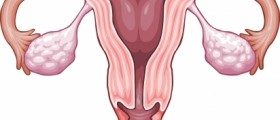
It is hard to discover the reasons which cause pelvic pain to occur. In most cases, women will not receive a clear diagnosis that explains the pain. However, in cases when the cause of the pain is found, the treatment focuses on that cause. In other cases where no cause is found, the treatment plan will mainly be focused on the management of pain.Symptoms
People should know that there are a lot of symptoms and signs of pelvic pain. Some of the most common are severe and steady pain, intermittent pain, dull pain, sharp pain or even cramping and a feeling of pressure deep within the pelvis. Apart from these, there are some other symptoms that do not occur as often but do in some cases. They are pain during intercourse, pain during bowel movement and even pain when a person sits down.
A lot of women feel that the pain becomes worse after long periods of standing. On the other hand, the pain reduces when a woman lies down. The intensity of pain varies from person to person. A woman should go to the doctor’s when the pain she is feeling in the pelvic area disturbs her normal daily activities.
Causes
In some cases, the cause can be of gynecological nature. Apart from these problems, certain diseases like irritable bowel syndrome can also cause pelvic pain. Women should be aware that psychological factors also play a role in the occurrence of pelvic pain.Endometriosis is considered to be one of the causes of pelvic pain. In this case, the uterine lining grows outside of the uterus.Pelvic pain is also caused by spasms or tension of the pelvic floor muscles. Chronic pelvic inflammatory disease, pelvic congestion syndrome and ovarian remnant are also known to cause pelvic pain.
- medlineplus.gov/pelvicpain.html
- www.nhs.uk/conditions/pelvic-pain/
- Photo courtesy of Giuliano Maiolini via Flickr: www.flickr.com/photos/giumaiolini/896866767/

















Your thoughts on this
Loading...